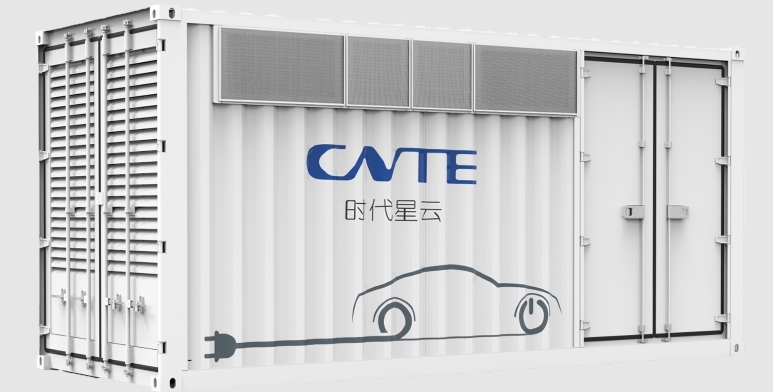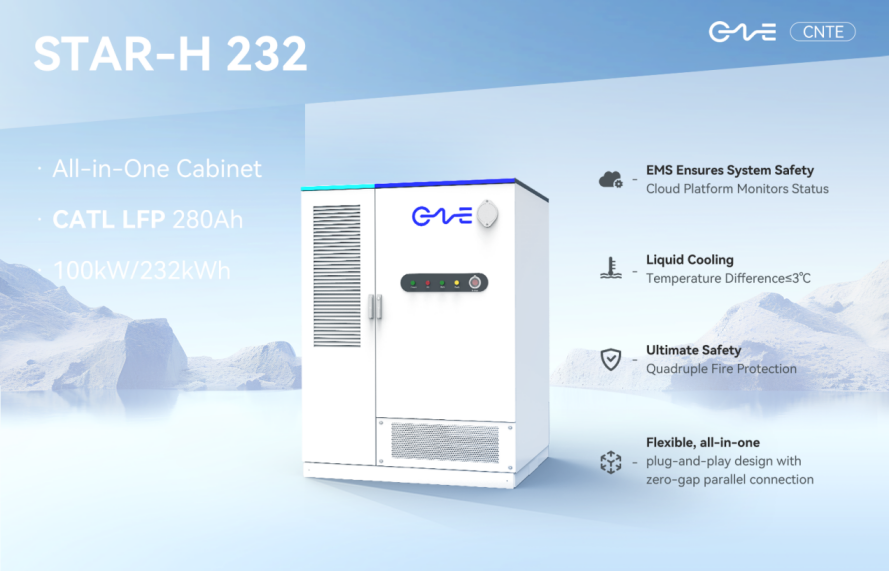Containerized Energy Storage: A Revolution in Flexibility and Scalability
Technological advancements, integration with smart grids, and a commitment to addressing safety and regulatory concerns position containerized energy storage as a cornerstone of the sustainable energy landscape. With CNTE leading the charge, the journey towards a more resilient, efficient, and eco-friendly energy future is well underway.
I. Introduction
A. Traditional Energy Storage Methods
For decades, traditional energy storage methods have played a vital role in maintaining a stable and reliable power supply. From pumped hydro storage to lithium-ion batteries, these methods have shaped the energy landscape. However, with the evolving needs of industries and the increasing demand for renewable energy integration, a new player has entered the field—containerized energy storage solutions.
B. Emergence of Containerized Energy Storage Solutions
Containerized energy storage has emerged as a game-changer, offering a modular and portable alternative to traditional fixed infrastructure. These solutions encapsulate energy storage systems within standardized containers, providing a myriad of benefits in terms of deployment, scalability, and efficiency.
C. Significance of Containerization in Enhancing Flexibility and Scalability
Containerization brings unparalleled flexibility and scalability to the energy storage sector. The ability to house energy storage systems in containers not only simplifies transportation but also facilitates easy integration into diverse environments. This blog explores the advantages of containerized energy storage, shedding light on its impact across various industries.
II. Advantages of Containerized Energy Storage
A. Mobility and Portability
1. Case Studies Highlighting Successful Deployments
Containerized energy storage solutions, exemplified by suppliers like CNTE, have proven their mettle in successful deployments in remote locations. From powering off-grid communities to supporting remote industrial projects, the mobility and portability of these containers offer a lifeline for areas with limited access to conventional power infrastructure.
2. Flexibility in Moving Energy Storage
One of the standout advantages of containerization is the flexibility it provides in moving energy storage where it’s needed most. The ability to transport these containers easily makes them ideal for temporary power needs or emergencies, ensuring a rapid response to varying energy demands.

B. Scalability
1. Adaptable to Varying Industry Needs
Containerized energy storage is adaptable to the varying needs of different industries. Whether it’s a construction site requiring temporary power or an industrial facility facing peak demand challenges, these containers can be scaled up or down based on specific requirements.
2. Ability to Scale Up or Down Easily
The scalability of containerized energy storage provides a crucial advantage in addressing demand fluctuations. Industries can efficiently adjust their energy storage capacity, optimizing resources and avoiding the pitfalls of overinvesting in fixed infrastructure.
C. Rapid Deployment
1. Reduced Lead Times
Compared to traditional energy storage systems, containerized solutions boast reduced lead times. The streamlined design and modular nature of these containers result in quicker manufacturing and deployment, a critical factor in meeting urgent energy needs.
2. Quick Response to Emergency Energy Needs
In emergencies, time is of the essence. Containerized energy storage solutions shine in their ability to offer a quick response to emergency energy needs. Whether it’s natural disasters or unforeseen power outages, these containers can be swiftly deployed to restore power.
III. Cost-Efficiency
A. Lower Upfront Costs
1. Compared to Fixed Infrastructure
Containerized energy storage solutions present a cost-efficient alternative to building fixed infrastructure. The lower upfront costs make them an attractive option for industries looking to invest in energy storage without committing to extensive capital expenditures.
2. Operational Cost Savings
Beyond upfront savings, containerized solutions offer operational cost savings through optimized maintenance and management. The modular design allows for targeted maintenance, reducing downtime and ensuring efficient operation over the long term.
B. Return on Investment (ROI) Analysis
An in-depth analysis of return on investment reveals the economic viability of containerized energy storage across different industries. The quicker deployment, adaptability, and reduced costs contribute to a compelling ROI, making it a strategic choice for businesses seeking sustainable and cost-effective energy solutions.
IV. Industries Benefiting from Containerized Energy Storage
A. Renewable Energy Sector
1. Integration with Solar and Wind Power Projects
Containerized energy storage seamlessly integrates with solar and wind power projects, addressing the intermittent nature of renewable energy sources. This integration enhances grid stability and reliability, making renewable energy a more viable and consistent power source.
2. Enhancing Grid Stability and Reliability
The stability and reliability brought by containerized energy storage are paramount for the renewable energy sector. These containers act as a buffer, storing excess energy during peak production and releasing it during periods of low production, contributing to a more stable grid.
B. Construction and Infrastructure
1. Supporting Temporary Power Needs
Containerized energy storage provides invaluable support for temporary power needs on construction sites. Whether it’s for lighting, equipment operation, or temporary offices, these containers offer a flexible and efficient power solution for construction projects.
2. Enabling Rapid Electrification
In remote construction projects where traditional power infrastructure is impractical, containerized energy storage enables rapid electrification. This is particularly beneficial for projects that require quick setup and breakdown, minimizing downtime and improving overall efficiency.
C. Events and Entertainment
1. Meeting Power Demands of Outdoor Events
The dynamic nature of outdoor events requires a reliable and adaptable power source. Containerized energy storage meets this demand, providing a mobile and scalable solution to power concerts, festivals, and other outdoor gatherings.
2. Temporary Power Solutions for Film Sets and Festivals
Film sets and festivals often require temporary power solutions. Containerized energy storage offers a convenient and efficient way to meet these demands, ensuring a seamless power supply without the need for extensive infrastructure setup.
D. Emergency Response and Disaster Recovery
1. Providing Reliable Power During Natural Disasters
In the face of natural disasters, reliable power is a lifeline for affected communities. Containerized energy storage ensures a continuous power supply, supporting emergency response efforts and providing essential services to those in need.
2. Quick Deployment for Emergency Response Teams
Emergency response teams rely on the swift deployment of resources. Containerized energy storage facilitates quick response times, allowing teams to establish power hubs rapidly in disaster-stricken areas, improving overall efficiency in relief efforts.
E. Manufacturing and Industrial Operations
1. Stabilizing Power Supply for Critical Processes
Manufacturing and industrial operations often face challenges related to power stability. Containerized energy storage provides a stable power supply, ensuring the smooth operation of critical processes and preventing disruptions that can be costly for businesses.
2. Addressing Peak Demand Challenges
Containerized solutions effectively address peak demand challenges in industrial settings. By seamlessly scaling up or down based on demand fluctuations, these containers contribute to a more efficient and cost-effective power management strategy.
V. Case Studies
A. Highlighting Successful Deployments in Various Industries
The Fujian Ningde lithiumk town optical storage charging inspection intelligent supercharging station serves as a shining example of the successful deployment of containerized energy storage in diverse industries. With a project size of 1030kW/1030kWh, this multi-functional new energy integrated service station has effectively addressed the growing demand for charging services for new energy vehicles.
B. Quantifiable Benefits and Outcomes Experienced by Organizations
The quantifiable benefits experienced by organizations deploying containerized energy storage are evident in the Fujian Ningde project. The station, covering approximately 2,100 square meters, incorporates a 630kW/618kWh liquid-cooled energy storage system and a 400kW-412kWh liquid-cooled energy storage system. With 20 sets of 160-180kW high-power charging piles, it stands as the first intelligent supercharging station in China to adopt a standardized design for optical storage and charging inspection.
VI. Future Trends and Innovations
A. Technological Advancements in Containerized Energy Storage
As the demand for sustainable and efficient energy solutions continues to rise, technological advancements in containerized energy storage are shaping the future. Innovations focus on improving energy density, enhancing efficiency, and incorporating more advanced materials. Suppliers like CNTE are at the forefront of these advancements, ensuring that containerized energy storage solutions remain at the cutting edge of technology.
B. Integration with Smart Grids and Emerging Energy Technologies
The integration of containerized energy storage with smart grids and emerging energy technologies is a key trend that promises to revolutionize the energy landscape. Smart grids enable more efficient energy distribution and storage, enhancing the overall reliability and resilience of the power grid. Containerized energy storage, with its modular and scalable design, seamlessly fits into this vision of a smarter and more interconnected energy ecosystem.
VII. Overcoming Challenges
A. Addressing Concerns Related to Safety and Environmental Impact
The deployment of containerized energy storage solutions raises legitimate concerns about safety and environmental impact. Suppliers like CNTE prioritize addressing these concerns by implementing robust safety measures and utilizing eco-friendly materials in their containerized systems. Stringent testing and compliance with industry standards ensure that these solutions not only meet but exceed safety and environmental expectations.
B. Regulatory Considerations for Widespread Adoption
The widespread adoption of containerized energy storage is contingent on navigating complex regulatory landscapes. Governments and regulatory bodies play a crucial role in shaping the future of the energy sector. Suppliers and industry stakeholders must actively engage with regulators to establish clear guidelines and standards that facilitate the deployment of containerized energy storage systems while ensuring compliance with safety, environmental, and performance regulations.
Conclusion
In conclusion, containerized energy storage has emerged as a transformative force in the energy sector. With CNTE leading the charge, these solutions offer unparalleled flexibility, scalability, and cost-efficiency, making them a strategic choice for a diverse range of industries. As the world continues to prioritize sustainable and adaptable energy solutions, containerized energy storage stands poised to play a pivotal role in shaping the future of power generation and distribution.
Get in Touch
Recent Posts
-

CNTE Unveils Innovative Energy Storage Solutions at RE+ 2024
Sep 19, 2024 -

Sustainable Power Storage Batteries Solutions with STAR-H:
Sep 16, 2024 -

CNTE Received by the President of the Cambodian National Assembly
Sep 06, 2024 -

CNTE Launches New Liquid-Cooled All-in-One Cabinet STAR-H
Aug 27, 2024 -

CNTE to Showcase Innovative Energy Storage Solutions at RE+ 2024 in Anaheim
Aug 26, 2024
